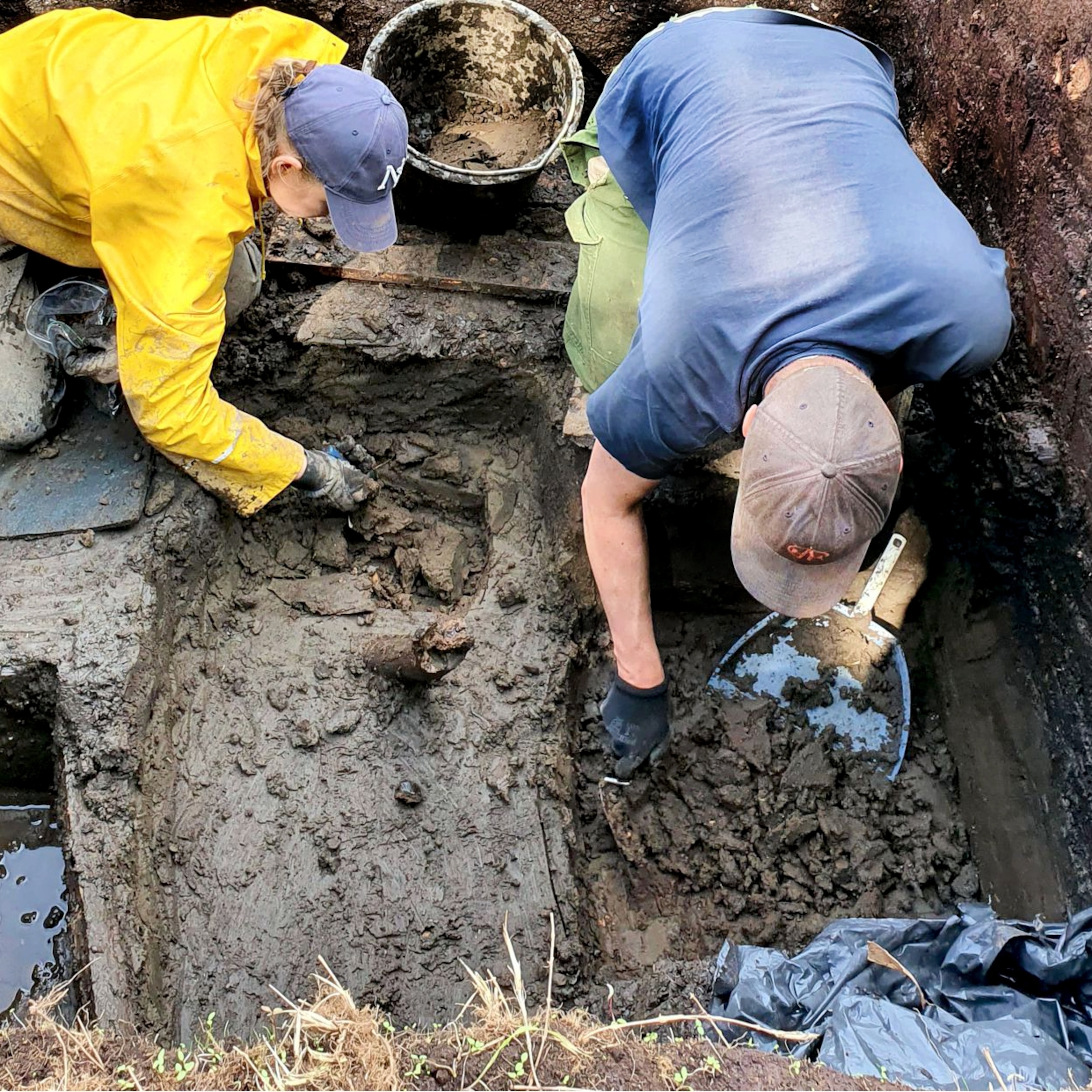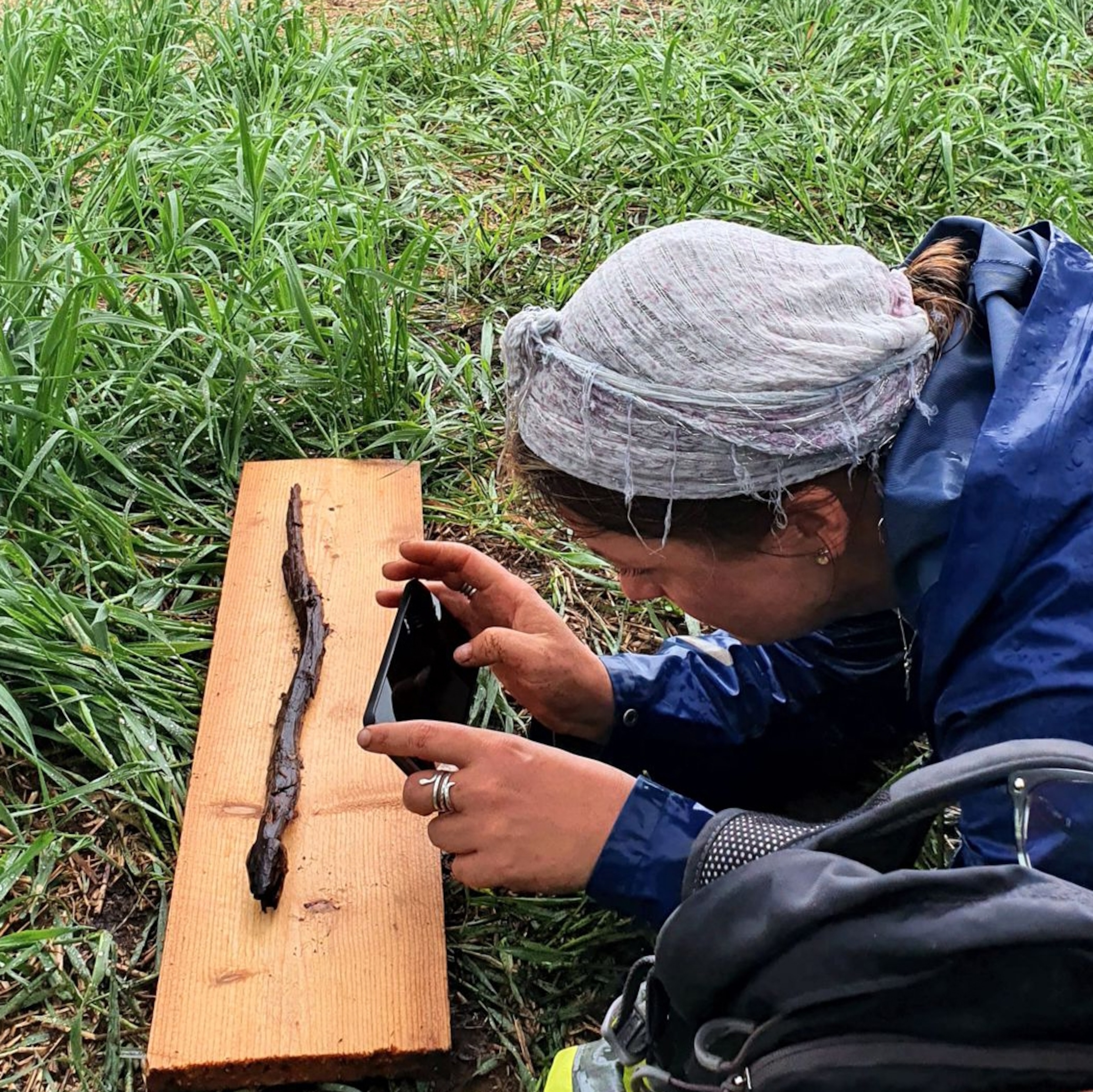Discovering a Timeless Treasure
In the waterlogged fields of Finland, an extraordinary archaeological find has surfaced, captivating the world with its ancient allure. Buried for millennia, a 21-inch-long wooden snake figurine has emerged, shedding light on the rich cultural tapestry of our distant past.
This remarkable artifact, discovered at the Järvensuo I site in southwest Finland, is a testament to the enduring fascination humans have held for serpents throughout history. Meticulously carved from a stick, the snake’s sinuous curves and intricate details speak to the skilled craftsmanship of its Neolithic creator.
The discovery of this unique wooden figure, estimated to be around 4,000 years old, has left archaeologists and historians alike awestruck. As Satu Koivisto, the lead researcher from the University of Turku, recounts, “We were stunned. The find gave us all shivers.”

Snakes in Ancient Cultures
Snakes have long held a prominent place in the pantheon of ancient mythologies and belief systems. From the serpent deities of Egypt and Aztec civilizations to the snake goddesses of India and the Mediterranean, these enigmatic creatures have been revered, feared, and depicted in art for millennia.
The discovery of the wooden snake figurine in Finland adds a new chapter to this rich tapestry of snake symbolism. While similar artifacts have been found in the eastern Baltic and Ural regions, they are relatively uncommon compared to representations of other animals, such as waterfowl or elk.
Researchers believe the snake from Järvensuo I may have been modeled after either the grass snake (Natrix natrix) or the European adder (Vipera berus), both of which are native to the region. The meticulous craftsmanship and the care taken to capture the serpent’s sinuous form suggest that this artifact held significant meaning for its creators.

Enigmatic Symbolism and Ritual Significance
The purpose of the wooden snake figurine remains a mystery, as Koivisto and her team grapple with the question: was it a child’s toy, a ritual object, or something else entirely? The location where it was found, a lush, marshy meadow that would have been difficult to access, adds to the intrigue.
Snakes have long been associated with shamanism and spiritual practices in Finno-Ugric and Sámi cultures of northern Europe. In the region’s rock art, serpents are sometimes depicted in the hands of human figures, hinting at the possible ritual significance of these creatures.
As Antti Lahelma, a co-author of the study, observes, “There seems to be a certain connection between snakes and people. This brings to mind northern shamanism of the historical period, where snakes had a special role as spirit-helper animals of the shaman.”
The tantalizing possibility that this 4,000-year-old wooden snake figurine may have been associated with ancient shamanic practices or rituals only adds to the intrigue surrounding this remarkable artifact.

Preserving the Past, Racing Against Time
The Järvensuo I site, where the wooden snake figurine was discovered, has a rich history of its own. First excavated in the 1950s and then again in the 1980s, the site has yielded a wealth of well-preserved organic artifacts, including fishing equipment, pottery, and a wooden scoop with a bear’s head handle.
The site’s unique location, nestled in the peat and mud of a long-gone lake, has allowed for the exceptional preservation of many perishable materials that would have otherwise decayed over time. However, this fragile environment is under constant threat, as Koivisto observes: “Farmland feels so cultivated there. There is a systematic drainage system lowering of groundwater all the time.”
With only one final year of a research grant from the Academy of Finland, Koivisto and her team are in a race against time to uncover the secrets of this remarkable wetland site. As the groundwater levels continue to drop, the researchers fear that the delicate organic artifacts, including the wooden snake figurine, may soon succumb to the relentless march of time.
Unlocking the Mysteries of the Past
The wooden snake figurine discovered at Järvensuo I is a captivating glimpse into the rich cultural tapestry of our distant past. This unique artifact, meticulously crafted and imbued with symbolic significance, serves as a tangible connection to the beliefs, rituals, and artistic expressions of the Neolithic people who once inhabited this region of Finland.
As archaeologists and historians work to unravel the mysteries surrounding this remarkable find, it serves as a poignant reminder of the fragility of our shared heritage and the importance of preserving these irreplaceable links to our collective past. The race against time to study and protect the Järvensuo I site underscores the urgency of our efforts to safeguard the invaluable treasures that continue to emerge from the earth, each one a testament to the enduring human spirit and our unquenchable thirst for understanding our own origins.

